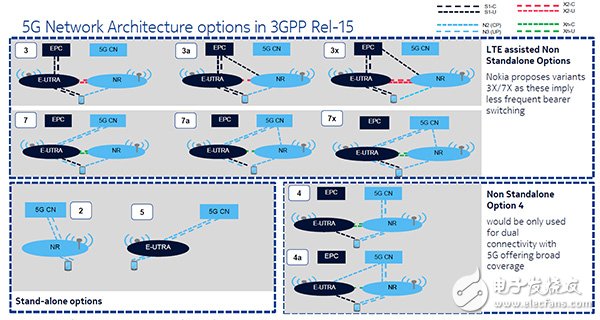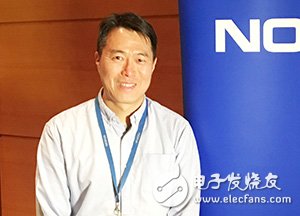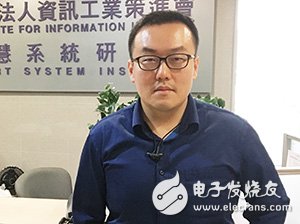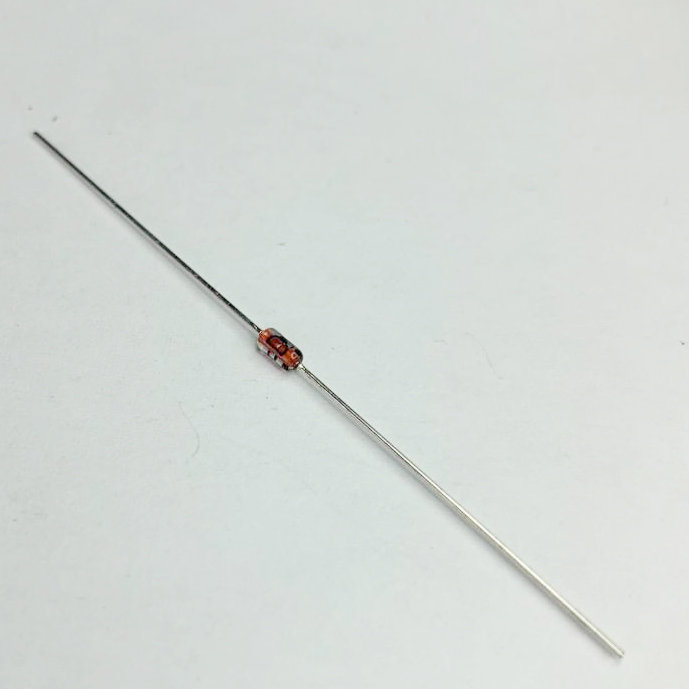The 5G NR NSA standard was released at the end of 2017 and is an important milestone in achieving the 5G commercialization goals. At present, the industry has actively developed relevant infrastructure, and will be able to realize 5G network trial operation and subsequent commercial deployment from the end of 2018 to 2019, and the 5G commercial time schedule has accelerated.
The scientific and technological community regards 5G as a disruptive technology, which will not only set off the industrial revolution, but also make the future life completely different. As you can imagine, in the future, when you buy goods in the store, you no longer need to check out the clerk, you can pay by “brushing your faceâ€; or you can drive by yourself on the street, the traffic in the city is completely intelligent, and the accident rate of car accidents is greatly reduced; Put on the virtual reality (VR) device, you can "move instantly" to the Olympic Games, NBA, MLB and other sports halls to watch the exciting events.
All of this, after having 5G, seems to be no longer out of reach. Then, when will the 5G that the industry is eagerly awaiting can be realized? After the 3GPP released the 5G Non-Standalone (NSA) 5G NR specification by the International Telecommunications Standards Development Organization, the answer can be said to be “near the momentâ€.
5G NSA standard bottoms infrastructure construction boomAt the end of 2017, 3GPP released the 5G NR NSA specification (Figure 1), which is a big step for the next generation 5G network. The completion of this official agreement means that semiconductor vendors, telecom operators, and network equipment operators can begin to prepare for the introduction of standardized technologies, 5G commercial timelines, and accelerate the pace.

Figure 1 Schematic diagram of 3GPP standard development time schedule
Zhou Shengmeng (Fig. 2), deputy director of the Institute of Information and Communication of the Industrial Technology Research Institute, said that the infrastructure plan of today's telecom operators will probably be based on the NSA architecture, in order to pre-launch commercial services in 2019. Compared with the official 5G architecture, the NSA architecture uses the 4G core network (EPC) and connects to the terminal through the LTE base station (eNB) or 5G base station (gNB), while the 5G core network The establishment will wait until the independent (SA) standard is released, and the industry will gradually replace the 4G core network with the 5G core network.

Figure 2 Zhou Shengmen, deputy director of the Institute of Information and Communication of the Industrial Technology Research Institute, said that the current telecom operator Metropolis is based on the NSA architecture.
3GPP currently proposes a variety of 5G link architectures for industry reference (Figure 3). Nokia (Nokia) Taiwan and Hong Kong Macau / Greater China Customer Operations Department Technical Director Chen Mingbang (Figure 4) pointed out that after the release of the NSA standard, the current industry Most of the development architecture is going to OpTIon 3. That is, the data and the command are first transmitted from the 4G EPC to the LTE E-UTRA, and then some of the commands and data are transmitted to the terminal, and the rest of the data is transmitted to the 5G base station and then transmitted to the terminal.

Figure 3 Various 5G link architectures proposed by 3GPP

Figure 4 Chen Mingbang, Technical Director of Customer Operations Department of Nokia Taiwan and Hong Kong, Macau/Greater China, pointed out that after the 5G SA standard is determined, operators will gradually replace the 5G core network and add base stations.
Chen Mingbang explained that after the 5G SA standard is determined, the operator will start to replace the 5G core network and add a base station, and then it will develop towards the OpTIon 7 architecture. In the OpTIon 7 architecture, the data and command transmission method is similar to the OpTIon 3 mode, but the message It is sent directly from the 5G core network.
All in all, the completion of the 3GPP first edition 5G standard is an important milestone in achieving the 5G commercialization goal. In fact, long before the standard was determined, big manufacturers such as Qualcomm, Intel, Ericsson, and Nokia had already been ready to seize the opportunity; after the standard was released, they accelerated. The 5G NSA deployment progress will be carried out at the end of 2018, or at the beginning of 2019, the 5G network trial operation or commercial service will be launched.
Ericsson and Verizon deploy 5G commercial network in the USTo accelerate the 5G commercial solution for 3GPP standards, Ericsson and Verizon will deploy pre-standard 5G commercial wireless networks and 5G core networks in parts of the United States in the second half of 2018. At present, the two sides are embarking on the goal of promoting to 5G, jointly promoting the action ecological cooperation system and accelerating the realization of 5G commercial services.
Since 2017, Ericsson and Verizon have conducted fixed wireless 5G network trials in the millimeter-wave band for different geographic and residential densities in multiple cities and residential areas, which is a key step in Verizon's deployment of fixed wireless broadband network plans. .
These tests will help to understand the 5G technology and millimeter wave technology used in the Verizon 5G Technology Forum (Verizon 5GTF) and 3GPP 5G NR. These new technologies are expected to meet consumers' growing networking needs for emerging networks, mobile networks and fixed wireless broadband experiences, such as high-definition audio and video, immersive AR/VR experiences, and Internet of Things and cloud computing.
Nokia/T-Mobile/Intel jointly build the first 28GHz 5G commercial base stationNokia, T-Mobile and Intel are three-way partners deploying 28GHz outdoor 5G commercial wireless systems in the busy city of Bellevue, Washington. The system uses Nokia's 5G commercial AirScale solution and the Intel 5G Mobile Test Platform (MTP) to transmit data over the 28 GHz radio band, helping T-Mobile deploy the first 5G network between vendors.
It is reported that in order to practice the 5G vision, all spectrum resources from 600MHz to millimeter wave must be included in the planning process. 5G is shouldering the vision of enhancing the ultra-wideband experience and connecting everything, so it is necessary to incorporate a wide range of network coverage that provides mobility into a nationwide network deployment strategy.
The partnership will allow the three companies to move forward toward the goal of promoting 5G standardization, improving the 5G ecosystem of chips and devices, and providing the best network experience for non-telecom customers. At the same time, this milestone also means the first step towards 5G millimeter wave (mmWave) wireless performance and transmission testing in the real world, allowing 5G technology to be moved from the lab to the field; this test also helps T-Mobile and Nokia Learn how 5G millimeter wave technology integrates with existing networks and coexists with LTE.
Huawei completed the third phase NSA 5G core network testAfter the release of the 5G NSA standard, many leading operators have chosen to use 5G NSA to quickly implement 5G commercial deployment and provide enhanced mobile broadband communication (eMBB) services such as AR/VR. For example, Huawei (HUAWEI) announced that it has completed the third phase of China's 5G technology R&D trials promoted by IMT-2020 (5G), based on NSA's core network key technology and business process testing.
This test is based on the commercial 5G core network solution released by Huawei at the 2018 World Action Conference. It completes the gateway selection including the core network CUPS (control plane and user plane separation) architecture, supports 5G UHF wide, and supports 5G NR. Independent billing, support for terminal LTE and NR dual connectivity, terminal access capability management and other key functions verification, and at the same time validate the 5G NSA standard based terminal registration, service request, mobility management, session management and other business processes.
The 5G technology R&D test was promoted by IMT-2020 (5G), and the 5G network part was tested in the 5G test working group. The test group consisted of China Information and Communication Research Institute and China Mobile, China Telecom and China Unicom. Work together. The verification test is divided into three phases. Huawei's 5G core network was successfully completed in the first and second phases, including core network service architecture, network slicing technology, action edge computing and other technical solutions.
Korea Telecom Announces 2019 to Provide 5G Business ServicesKOT Korea KT announced that it will implement the first 5G commercialization service in March 2019; KT expects that 5G commercial services will start in B2B service in March 2019, and B2C business services will be launched in the second quarter of 2019. .
According to the foreign media "NETMANIAS" report, KT will develop 5G from a simple network to a unified platform through the "E2E Orchestrator network virtualization integration control system" to revitalize the 5G ecosystem.
With E2E Orchestrator, you can quickly reconfigure/change virtualized network devices based on business needs, enabling efficient network operations and providing users with a variety of 5G services.
At present, KT is developing five network solutions for 5G commercialization in 2019, namely 5G Slot-integrated Structure, 5G-LTE Interworking Structure, and intelligent multi-beam tracking solution. Intelligent Multi-beam Tracking Solution, In Building Solutions, and AI-based Network Optimization Solution; these solutions are expected to be completed in the third quarter of 2018.
The 5G NSA deployment is in full swing. However, the biggest difference between 5G and 4G LTE is the addition of the Network Slicing function, which enables the 5G core network to use network slicing and set up according to various application cases.
Network slicing is indispensable for virtualization as an important stepZhou Shenglan pointed out that in order to meet various applications, such as Internet of Things (IoT), large bandwidth Internet access or low latency, different network functions are needed to meet diverse needs. Therefore, the 5G nuclear network adds network slicing capabilities, allowing operators to use software-defined networking (SDN) and network function virtualization (NFV) for network slicing, dividing several different application service scenarios, and providing customized network services.
For example, the IoT device's transmission rate requirement is not too high, but it must support a large number of networked devices. When the 5G network needs to support the eMBB application scenario, the throughput (Throughput) must be high, but the number of users is not large. Technically speaking, these two are completely different applications, and the previous 4G LTE nuclear network could not be flexibly allocated. Therefore, when the standard organization sets the 5G architecture, it proposes the concept of network slicing to properly and dynamically adjust the resource allocation. To implement network slicing, network virtualization is the first step.
Network virtualization means the network and security functions required in the data center. It can be built into the virtualization software (Hypervisor) or the network virtual machine (Network Virtual Machine) to provide the network required for the service. security function. Through network virtualization, network and telecom operators can more cost-effectively, flexibly and flexibly handle customer network infrastructure needs, or adapt to changing web application services.
Chen Mingbang explained that network virtualization is a clear direction for operators to develop 5G. Since the 5G SA standard has not yet been set, most of the operators are starting with the NSA architecture. The core network is still dominated by LTE and does not have the network slicing function. Therefore, after network virtualization, it is easier to deploy network resources to provide services, and after virtualizing the LTE core network, it is easier to upgrade to the 5G core network in the future.
For the "slice" of the network, the increasing transmission volume and new services and applications, Nokia also has a related solution -5G Future X. This product is a solution that can effectively expand and meet the needs of telecom operators.
Nokia 5G core network solutions, such as Cloud Packet Core, combine the concepts of cloud native architecture such as network function software deaggregation, stateful efficient processing mechanism and stateless functional software with shared data layer. Components, as well as automated cloud networking technologies and dynamic lifecycle management.
Upgrade 5G system capacity, small base station role has changedSmall base stations are not new concepts, but their importance in the 5G era can be said to increase. Zhou Shenglan explained that the function of the small base station in the past was coverage (Coverage). For example, if there is a scope that cannot be covered by the large base station, a small base station will be built to "fill the hole" to fill the area that cannot be covered by the large base station network.
Zhou Shenglan pointed out that the reason why small base stations are not easy to popularize, apart from the high cost of their own construction and the problem of mutual interference between large and small base stations, is that their previous function is to "fill holes". This type of use makes the popularity of small base stations less than expected.
In the past, small base stations probably played such a role. However, the 5G standard sets three usage scenarios, namely, enhanced mobile broadband services, massive multi-machine type communication (mMTC), ultra-high reliability and ultra-low latency communication (URLLC).
Among them, enhanced mobile broadband covers a variety of different service applications (such as AR / VR, UHD / Hologram, high mobility, etc.), for network system requirements, will focus on high transmission rate, high density, wide area coverage, high Mobility, multiple high-speed-rate terminals, fixed-action convergence networks, and small base station deployment.
In this regard, Zhou Shenglan said that eMBB is very suitable for the deployment of small base stations, and its role has begun to change. For example, if a large base station has a transmission rate of 1 Gbps and a coverage of 1 square kilometer, within this one square kilometer, the overall transmission rate is still 1 Gbps regardless of the number of people used. If the number of people is large, the network capacity may be Will not be used.
However, if 10 small base stations are deployed, each with a transmission rate of 1 Gbps, the overall system capacity can be increased tenfold to 10 Gbps, so that each user gets more network capacity.
In other words, today's small base stations can be said to improve system capacity and improve user service quality through the construction of small base stations. The function of small base stations has changed from the past Coverage to the current combination relationship ( Composition).
Chen Mingbang added that small base stations have a finishing touch in 5G high-frequency applications (such as millimeter waves). Because high-frequency signals are easily blocked, large-scale base stations have limited transmission, and external signal transmission to indoors is difficult to implement in high frequency bands. Therefore, small base stations can be deployed for indoor signal transmission. In the future, if high-frequency applications are developed. Small base stations will be deployed more densely.
In response to this trend, ITRI developed ultra-high-density small-base station networking technology, using eight small base stations developed by ourselves, and the base station can be synchronized on the system after the ultra-high density and coverage area are highly overlapped. It achieves the frequency accuracy of 1ppb and cooperates with the ultra-high-density network server to carry out cooperative transmission between multi-base stations. The overall system can achieve nearly 4~8 times system performance growth.
The characteristics of this technology include: the centralized UDN Server is used to coordinate the interference cancellation and cooperative transmission services of each base station; the efficient computing power of the UDN Server helps the base station to perform accurate interference cancellation calculation to improve the transmission efficiency; The precise synchronization of time and frequency enables the signal between the base stations to form a constructive composite wave, which enhances the signal strength received by the mobile phone; and through the instant interference compensation technology of the Institute, before the base station transmits the signal, it changes according to the radio. Compensate for phase and amplitude, eliminate interference signals, and improve the quality of signals received by mobile phones.
Huawei/Ericsson pushes new small base stationAs mentioned above, the functionality of small base stations has changed and the importance has increased. Huawei pointed out that in the 5G era, 70% of the business will occur indoors, and the capacity density of indoor scenes will grow eight times in the next five years. Therefore, high-frequency C-band and 4T4R multi-antenna technology will become the key means and technology to enhance the indoor 5G user experience. As a result, small base stations have become one of the elements of 5G infrastructure construction, and network equipment vendors and telecom operators continue to develop new generation products.
For example, Huawei released a new generation of small base station -5G LampSite for indoor coverage scenarios (Figure 5). This product is the first multi-band integrated indoor small base station that supports both 5G NR and 4G LTE. It can be based on CAT6A cable or fiber laid in 4G LampSite deployment, and equipped with 4T4R capability to ensure the same point deployment of 5G LampSite and original 4G LampSite. Achieve 4G/5G total coverage and reduce operator secondary planning.

Figure 5 Huawei released a new generation of small base station -5G LampSite to meet 5G indoor coverage needs
In addition to Huawei, Ericsson has also launched a new generation of 5G small base station solutions, adding a new wireless product called Street Macro in the city. This product is a wireless base station between a large base station and a small base station. It can be deployed on the building's façade and takes up very little space, but provides sufficient network efficiency and coverage.
Waiting for the high frequency band to confirm that 5G development is expected to hit another high pointThe application of high frequency millimeter wave is another focus of 5G. However, in the 5G NR NSA standard released in 2017, the high frequency band has not been set. In this regard, Cai Zongtang (Fig. 6), senior engineer of the Center for Forward-Motion Communication System of the Institute of Intelligent Systems Research, pointed out that the operators are mostly deployed in the frequency band below 6GHz, but the high frequency band is also the key to the development of 5G, which can expand many Innovative applications. Therefore, setting the high frequency band will be the next focus of the standards organization. It may be decided by the World Communication Conference (WRC 19) in 2019 that the frequency band above 6 GHz will be determined.

Figure 6 Cai Zongxi, senior engineer of the Center for Foresighted Mobile Communications Systems, Institute of Intelligent Systems Research, estimates that the high frequency band may be dominated by 28 GHz.
At present, there are many candidate frequency bands in the high frequency band, and in addition to the common 28 GHz, it also includes 39 GHz, 73 GHz, and the like. Cai Zongxi believes that the future high-frequency band may have the best chance of 28GHz. Not only is the industry more consensus, but the technical challenge is lower, it is easier to achieve, but it will still be clear after WRC 19. After the confirmation of the high frequency band, the deployment speed of the operator will be much faster, and the architecture of the 5G NR SA will be the main one.
In short, before the 5G high frequency band has been decided, the operator's deployment will focus on the frequency band below 6 GHz and the NSA architecture, and then gradually turn to the SA architecture and high frequency development. Regardless of the method used, the 5G hot business opportunity, as well as the positive intentions of semiconductor vendors, network equipment vendors and telecom operators; the efforts of regional network trial operation and commercial deployment, 5G, will be carried out between the end of 2018 and 2019. It is about to enter the stage of large-scale commercial transformation.
Two - way trigger diode, also known as two - end ac device (DIAC), and two - way thyristor at the same time.Because of its simple structure and low price, it is often used to trigger the bidirectional thyristor, and can also constitute overvoltage protection circuits.Construction, symbol and equivalent circuit of a bidirectional trigger diode.
Also commonly used in the overvoltage protection, timing, shift equal circuit, Figure 2 is the overvoltage protection circuit composed of bidirectional trigger diode and bidirectional thyristor.When the transient voltage exceeds the DIAC and Ubo, the DIAC quickly conducts and triggers the bidirectional thyristor to also conduct, so that the following load is protected from overvoltage damage.

DO-35,DIACS,DO-35 Diode,DO-35 package,Small Signal Diode
Changzhou Changyuan Electronic Co., Ltd. , https://www.cydiode.com